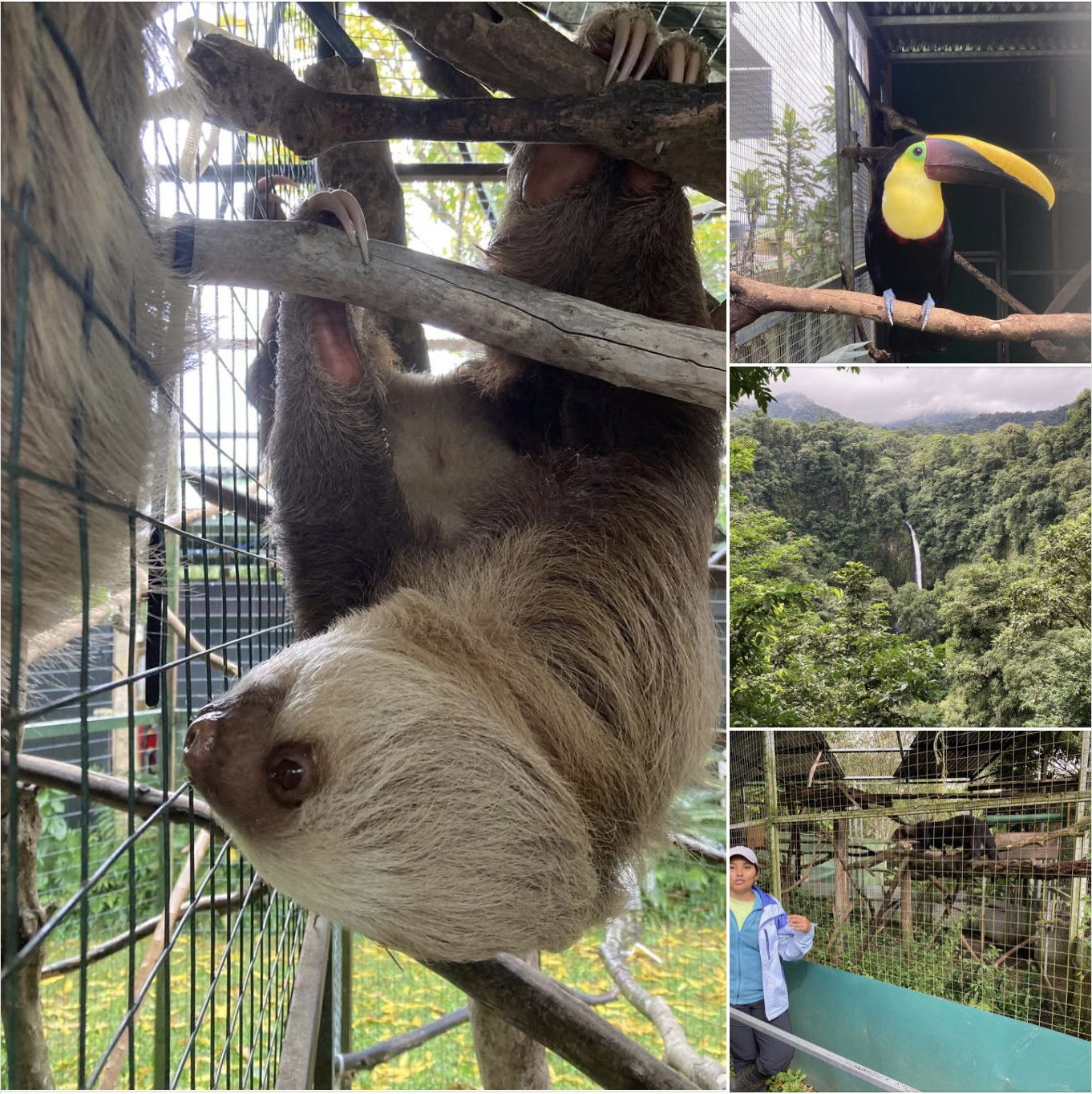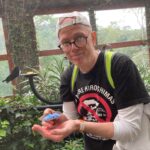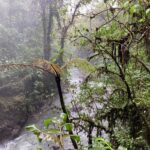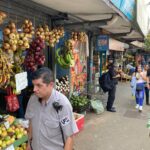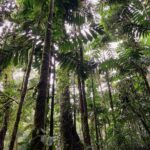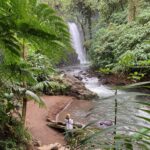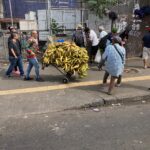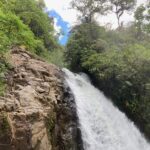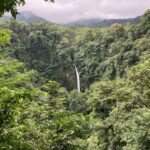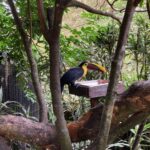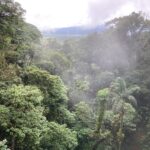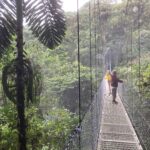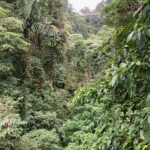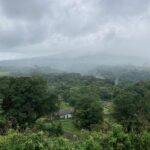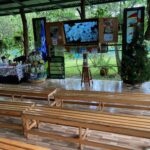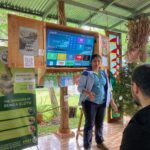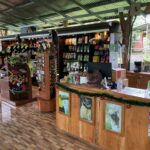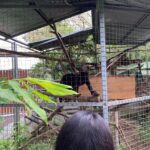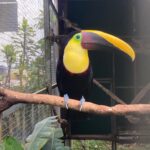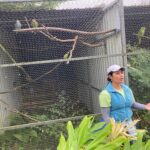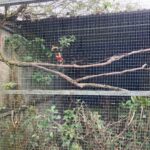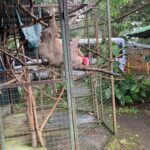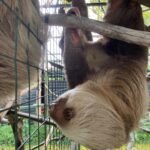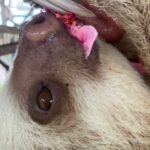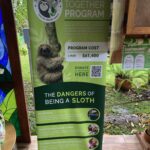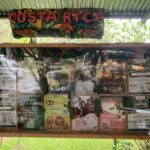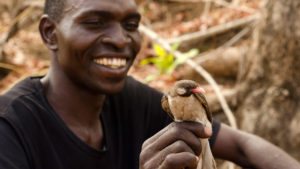Somebody once said that nature’s symphony plays louder in Costa Rica. Although there may be more awe-inspiring parts of the world, I agree. I was lucky enough to visit Costa Rica, and I was equally moved by both the beauty of the country, and its people.
Why is Costa Rica special?
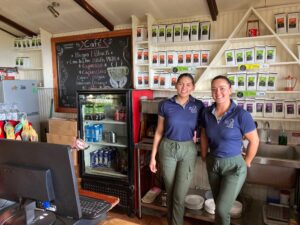
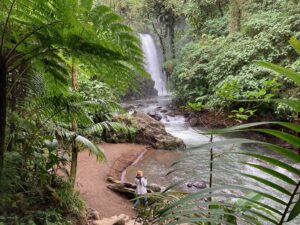

1. Costa Rica is one of the Happiest Places on Earth
Did you know that Costa Rica is one of the happiest places in the world? As per theHappy Planet Index (HPI),“In 2012, Costa Rica held the top position as the happiest country in the world. A lot of factors play into this ranking including the fact that the government invests funds that it would have spent on an army (which was abolished in 1949) into education, healthcare and pensions. It has since slipped from the top position, but it’s still a country filled with smiles and positivity.”Currently, Costa Rica ranks 4th out of 147 countries, with a “Happy Planet Index” score of 54.1. Life expectancy in Costa Rica is 81 years(worldometer data),as “strong social networks, and a deep connection to nature” are also considered vital to a happier, and healthier life. Despite its enormous financial power (which continues to dwindle due to its ongoing wars, and $36.4 trillion of debt), the United States has a happiness score of 32.1, which ranks a lowly 102nd out of 147 countries. Clearly, the US doesn’t place importance on the wellness of its population. The United States has a life expectancy of 79 years, which is no doubt due to the Standard American Diet (SAD), “Out of Control” military spending (over 62% of the US federal discretionary budget is spent on military programs), lousy to non-existent healthcare, soaring child poverty and homelessness rates, food insecurity (1 in 4 children in NYC are food insecure), and a disappearing safety net for both the elderly, and the majority of Americans who are living “paycheck to paycheck”. Moreover, while the United States continues to outspend the next 10 countries combined on its “life destroying” military, it also recently cut federal spending on “life-saving” programs by $142 BILLION (including housing vouchers, suicide/mental health services, nutrition & Head Start programs, and veteran benefits). Although the United States is still considered one of the richest countries in the world, inequality, and injustice, are a way of life for most Americans.
Click here to learn more about how the Happiness Index is calculated.
Click to learn more about why Costa Rica ranks near the top of the Happiness Index.
Click here to learn more from Brown University on how even the richest Americans face shorter lifespans.
 Image: Trafalgar.com
Image: Trafalgar.com
2. There are over 500,000 species of wildlife in Costa Rica, 900 of which are Birds!
Did you know that Costa Rica is one of the most biodiverse countries in the world, with over 500,000 species thriving within its borders? As per journalist Eddie Johnstone, “Nestled in the middle of Central America, Costa Rica is one of the most biodiverse places on the planet. Around half a million species are known to live there, which is equal to about 5% of the estimated species on Earth. Considering Costa Rica only makes up 0.03% of the world’s landmass, this showcases the remarkable biodiversity of such a small country.”
Click here to learn more from the Kew Garden Website.
3. Costa Rica is Big on Plant-Based Foods! (but not so much on Organic Farming)
Although China has the best plant-based food on the planet, Costa Rica may not be too far behind. Fresh pineapple and watermelon were staples, as every eatery we visited had delicious Plant-Based options, with many of the menus brandishing entire “Vegan” or “Vegano” sections. As per Zach from Bigger Life Adventures, “The country’s food culture is built on simplicity, sustainability, and a deep connection to the land. From tropical fruits like mangoes, pineapples, and papayas to starchy staples like plantains and cassava, Costa Rica’s food culture is world class. This nutrient-rich produce is accessible to nearly everyone, regardless of their circumstances, making it a cornerstone of life here.” Unfortunately, Costa Rica also leads the world in pesticide use (per capita, and per hectare of cultivated land), despite a small group of Costa Rican farmers who are dedicated to providing chemical free food to the nation.
Click here to learn more about one of our favorite restaurants in Costa Rica, Las Tejas.
Click here to learn more about pesticide use in Costa Rica.
Click here for the recipe of a traditional breakfast dish in Costa Rica called gallo pinto.
Animal Rescue in the Heart of Costa Rica
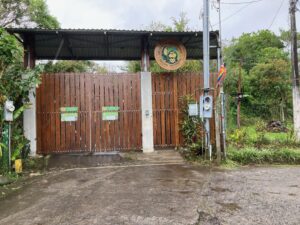
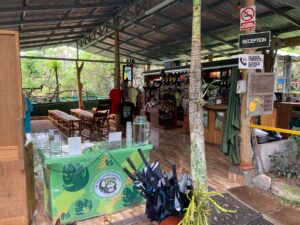
During our stay, we visited the wonderful Toucan Rescue Ranch (TRR), in San Josecito, Costa Rica. The stories, the facility, and the staff were all superb. Seriously. I am an activist, and a former NYC school teacher, and I can tell you that it is mostly young people, who give me hope. The older generations? Not so much. As per the notes from TRR’s outstanding introductory video, “Leslie Howle founded Toucan Rescue Ranch initially to look after, you guessed it, Toucans! But other birds needed help as well, and eventually, TRR started caring for sloths and other wildlife that have been harmed by human causes.”
Click here for the excellent 3+ minute TRR Welcome Video.
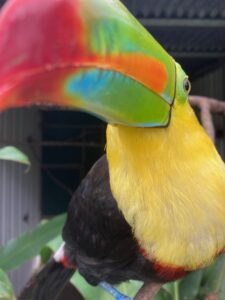
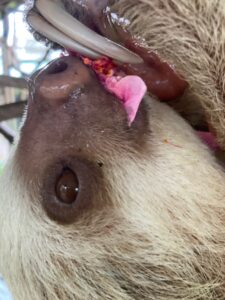
According to the Toucan Rescue Ranch website, “The mission of Toucan Rescue Ranch (TRR) is to rescue, rehabilitate, and release Costa Rica wildlife. TRR works with a model focusing on conservation, education, and research to ensure a brighter tomorrow for Costa Rica wildlife.” In 2024, over 100 people from around the world volunteered and interned at TRR to help provide care, rehabilitation, and education for rescued animals. The ranch also estimates that since 2020, they’ve welcomed over 30,000 guests on their virtual and in-person educational walks. In other words, the Toucan Rescue Ranch Rocks!
Click here for TRR’s inspiring, Saving the Sloths Together video.
Our TRR tour guide was Joselyn (we think), and as expected, she was knowledgeable and lovely in every way. Without naming names, there were only two minor bumps in the flow of our tour, and the conversations with various staff members. The first occurred when I commented on how one of the Toucans had an expression of kindness on her face, to which an employee immediately dismissed as unlikely, as she rolled her eyes and downplayed the possibility of animals being compassionate to others. Later, when I asked if the rescue ranch encouraged visitors to eat cruelty free, Plant-Based diets, another staff member gave me a look as if I was crazy. Overall, the TRR team struck me as being young, smart, compassionate, and extraordinary. However, my guess is that a few of them may have never considered the destructive impact that the Standard American Diet (SAD) has on Animals, Human Health, and Mother Earth (not to mention how a “Western” diet also creates a violent mindset that normalizes suffering and makes wars more acceptable). It would be great if the Toucan Rescue Ranch addressed these concerns, and educated not only their visitors, but perhaps some of the staff as well on the damage that is caused by a catastrophic food system that is based on violence and suffering.
Here are a few recommendations for the Toucan Rescue Ranch staff, and anyone who wants to learn more:
Click here for an Oxford Study that concluded that avoiding meat and dairy is “single biggest way” to reduce your impact on Earth.
Click here to learn more about Animal Welfare from the outstanding documentary, Earthlings.
Click here to learn why Dairy is Scary.
Click here to learn why a healthy plant-based diet is the most powerful weapon we have to fight disease.
Click here to learn more about Drs. T. Colin Campbell, Thomas Campbell, and the China Study.
Animal Kindness
Due to the skepticism of a few members of the TRR staff regarding the idea of animals being kind to other animals, I wanted to share an excerpt from John Robbins’ groundbreaking book, Diet for a New America. Although John Robbins, and the entire vegan movement, have lost the moral high ground due to their silence (or worse), on Israel’s US backed GENOCIDE in Gaza, I still learned a ton from Mr. Robbins over the years. Diet for a New America, was published in 1987, and remains one of my favorites.
Here is a passage from Diet for a New America, on how Animals can be Compassionate to other Animals:
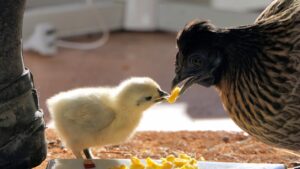 Image: Andrea Lightfoot
Image: Andrea Lightfoot
“Chickens are not the fearful creatures we have been conditioned to think.
And the generally agreed-upon idea that they are stupid is equally ungrounded
in fact.
Now, I’m not saying that chickens are the most brilliant of animals. But I
do know that our understanding of what constitutes intelligence is utterly
relative. If an aborigine drafted an I.Q. test, for example, all of Western
civilization would probably flunk. We have a very convenient and self-
serving way of defining intelligence. If an animal does something, we call it
instinct. If we do the same thing for the same reason, we call it intelligence.
Personally, I wouldn’t be too quick to try to define the intelligence of
chickens. I’d be afraid of judging them by standards that are irrelevant to
them. For the more I’ve learned about the kinds of creatures they are and what
they have been known to do, the more I’ve been impressed by their unique
kind of intelligence.
One naturalist gave a chicken hen 21 guinea fowl eggs he had found, just
to see what would happen. These small, hard-shelled eggs are a far cry from a
chicken’s eggs. But the hen took the task to heart and somehow managed to
tend to all 21 of the eggs without a sign of protest. As a product of our
conditioned conventional notions about chickens, I originally thought she did
this simply because she was too stupid to notice they weren’t her own eggs.
When the chicks hatched, she didn’t seem at all perturbed by the fact that they
weren’t chickens. Their small partridge-like appearance and unfamiliar ways
evidently presented no problem to her. Again, I thought she was simply too
stupid to notice they were not chickens. But I was wrong. She was far more
tuned in to reality than I knew. After a few days of brooding the little guinea
fowl, she took them away out into the cover of some bushes. Instead of asking
them to feed on the ordinary mash that was given the chickens, she scratched
in some ants’ nests for the white pupae. Chickens don’t eat such food, but
guinea fowl do! The little ones took to it with instinctive relish.
How could she have known? What form of intelligence was she
displaying? Was she perhaps sufficiently tuned in to have received some sort
of message from their collective psyche? That’s more than man can do!
On another occasion, a naturalist gave a chicken hen some duck eggs. She
tended them and hatched them as if they were her own, yet wasn’t fazed at all
when ducklings emerged from her labors instead of chicks. Utterly undaunted
by the situation, she proceeded to do something neither she nor any other
chicken in the area had ever done before. She walked up on a plank bridging a
stream. Then, clucking, she invited the little ducklings into the water.
It is a mystery to me how these mother hens knew what to do for the
babies they hatched who were of another species. But somehow they did. It
appears that when we speak of being taken under someone’s wing we are
correctly referring to a remarkably caring and sensitive kind of nurturing.
Living as divorced from nature as most of us unfortunately do, we may not
have much personal experience with chickens anymore and so may not know
what wonderful mothers they are. But throughout recorded history the hen has
been a supreme symbol of the best kind of mothering. In fact, the Romans
thought so much of the maternal qualities of the hen that they frequently used
the phrase “son-of-a-hen” to mean a fortunate and well-cared-for man.”
Click here for a link to John Robbins’ Diet for a New America.
How to Run An Animal Rescue Ranch
I was curious to learn more about the Toucan Rescue Ranch, and to share their experiences and knowledge with others.
As a result, I reached out to their Marketing Supervisor, Maria Vargas, who couldn’t have been kinder, and more generous with her time. Here is a part of our exchange:
1. What do you love most about Toucan Rescue Ranch?
Maria Vargas (MV): “Working for wildlife is fascinating. Conservation work is a challenge every day, which makes every day different.”
2. What do visitors, local and non-local, need to know before visiting your ranch?
MV: “Toucan Rescue Ranch offers a variety of tour and hike experiences, all tailored to the needs of the visitor and what they want to learn. Each experience is completely personalized and led by experts who can answer any questions you may have about the species. All experiences offered at Toucan protect the animal and its people. Therefore, we prohibit any contact between tourists and the animals, as well as selfies with them. This is based on a strict policy of protection and responsible tourism.”
3. Who funds your work? Is it a non-profit organization? What is the best advice that you could share on fundraising?
MV: “TRR is a foundation, where income is 100% from donations. Therefore, we offer different options for donating, from paying for the tour, donating through our website, symbolic adoption of an animal, to purchasing products related to our cause. The best advice I can give is that our monthly expenses are around $50,000, but we want to invest in educational and preventive options to reduce the number of animals we receive. This requires monetary support. Therefore, if we contribute to prevention or try to raise awareness, it’s possible to alleviate this global problem that affects us all.”
4. Do you encourage your employees and volunteers to eat a cruelty-free, Vegan, or Plant-Based diet? How about your visitors? If not, why not?
MV: “No. Everyone’s beliefs and preferences are respected. However, after a period of time, learning and spending so much time with animals, your perspective changes, and some decide to change their eating habits.”
5. What are one or two of the biggest challenges in running an animal rescue ranch?
MV: “The biggest challenge is that animals continue to arrive every day, and most of them are due to issues involving humans, such as excessive logging, roadkill, pet accidents, etc. This indicates that misinformation is on the rise, and the expansion of unethical tourist sites doesn’t help educate, only sell you the experience. And each animal requires a large investment, which is the biggest challenge: having the money, food, treatments, and more for each animal.”
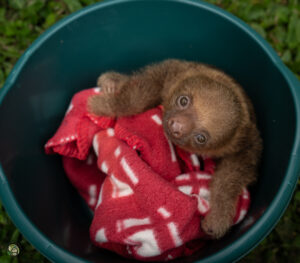 Image/Story: ToucanRescueRanch.org
Image/Story: ToucanRescueRanch.org
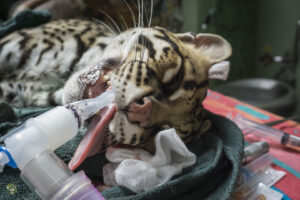 Image/Story: ToucanRescueRanch.org
Image/Story: ToucanRescueRanch.org
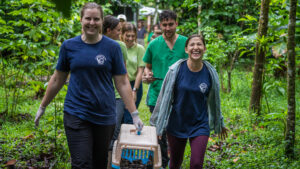 Image/Story: ToucanRescueRanch.org
Image/Story: ToucanRescueRanch.org
6. What percentage of your rescued animals are reintroduced into the wild?
MV: “By 2024, we will have received 676 animals, of which 246 were successfully reintroduced. 55 remained in rehabilitation awaiting progress, and 37 were transferred to specialized centers for that species. Although we have great opportunities for reintegration, it must be taken into account that animals arrive at the Center in critical condition.”
7. I know that the top priority is the animals, but how difficult is it to manage the human employees and volunteers? Is there a succession plan?
MV: “There is a plan for volunteers and internships. These must be completed for a certain period of time to adapt to teamwork and gain knowledge of each species. The employees are highly educated in various areas, which generates magnificent teamwork for animal welfare.”
8. Are the two veterinarians full-time staff members? How many people volunteer per year at the Toucan Rescue Ranch? If a non-local would like to come volunteer with you (we were told that there is a 20-day commitment), do you help the volunteers find accommodations locally?
MV: “The veterinarians are full-time and part of the staff, complying with their legal rights. For volunteers, we have peak and off-peak periods. However, we have a team tasked with conducting interviews with people who have questions and concerns about volunteering. They can tell you whether you need housing nearby or not, and will provide you with options and facilities to ensure your stay is safe.”
9. Your introductory video was terrific. Is it available on your website or elsewhere online?
MV: “Yes, available on YouTube.”
Click here for the video.
10. Are you looking to expand your program? Where do you see yourself in 5 years?
MV: “We’re looking to expand our space. However, this expansion also goes hand in hand with expanding our knowledge, education, and work at a global and international level.”
11. Are you passionate about your work? Do you have other passions as well? If so, would you care to share?
MV: “I’m passionate about my work. I’m fortunate to be able to help solve a global problem and try to be part of the change.
Being able to combine my passion for marketing with conservation is very challenging but simply fascinating.”
12. What has surprised you the most about your work?
MV: “Every day is a new experience. Being able to learn about so many species, stories that are difficult to hear, and seeing stories that have a positive impact. However, seeing an animal arrive in critical condition and watching it fight every day for its life is impressive. And if we add to that the possibility of being released, these are processes that make you cry with joy.”
Thank you Maria, and everyone at the Toucan Rescue Ranch, for all that you do!
Click here to learn more about volunteering opportunities, and how to support Costa Rica’s outstanding Toucan Rescue Ranch.
Final Thoughts on Costa Rica

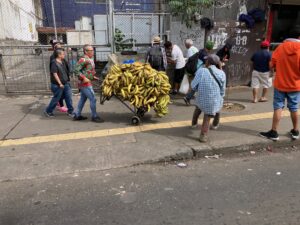
The streets of San Jose are as dirty and congested as any downtown area in the world. Overall however, Costa Rica is not just unforgettable due to its physically stunning rain forests, waterfalls, and abundance of amazing wildlife, it is also memorable for the beautiful people who live there (and not just in the service industries). There were many moments when we were fatigued, and vulnerable, and strangers stepped up with their kindness and generosity, and made us feel at home. At one point, we lost a wallet with credit cards, IDs, and cash, and were a block away, heading in the opposite direction, when a young man came running after us, demanding that we stop. He had found our wallet, and with a big smile on his face, acted as though it was no big deal to have the back of everyone in his country. We thanked him profusely, and he couldn’t have been more selfless, or humble. 🙂
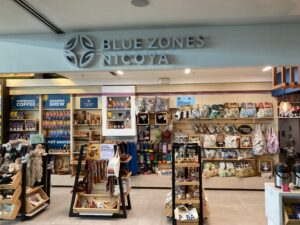


Lastly, on our way home, we happily stumbled across a Blue Zones Nicoya store at the San Jose Airport! If you are unfamiliar, the Blue Zones are 5 parts of the world, (1.) Okinawa, Japan, (2.) Ikaria, Greece, (3.) Sardinia, Italy, (4.) Nicoya, Costa Rica, and (5.) Loma Linda, California, where people live the longest, and happiest lives, and have the highest number of centenarians (people who live to 100 and beyond). The Blue Zones research is based on the wonderful work of Dan Buettner.
Click here for my two cent review of the docuseries, Live to 100: Secrets of the Blue Zones.
Did you know that the diet of the longest lived people in the Blue Zones is 95-100% Plant-Based? 🙂
The bottom line? Our Costa Rica trip reminded me once again that we are all brothers and sisters, and that all children are our children. In other words, Costa Rica, and the Toucan Rescue Ranch Rock!
Until next time…
Free Palestine!
 Artist: Carlos Latuff
Artist: Carlos Latuff

